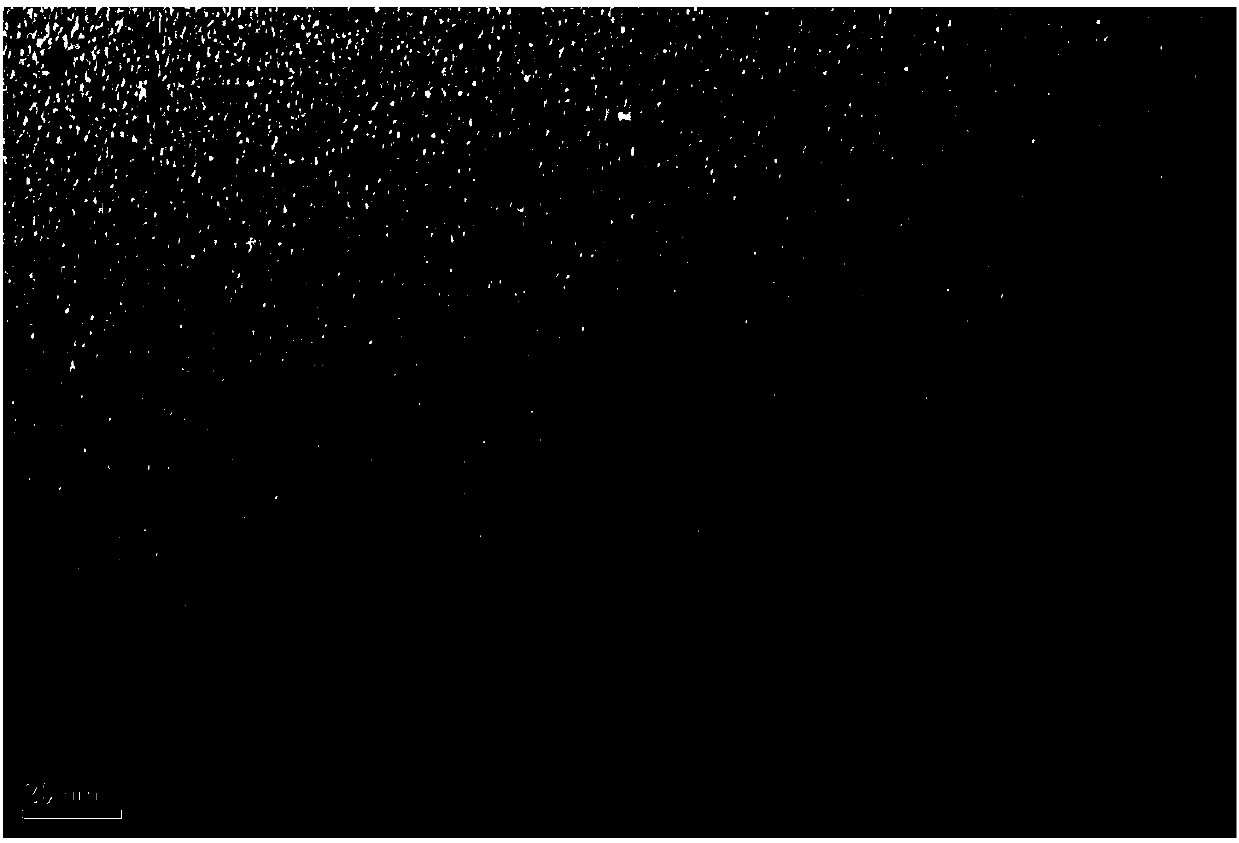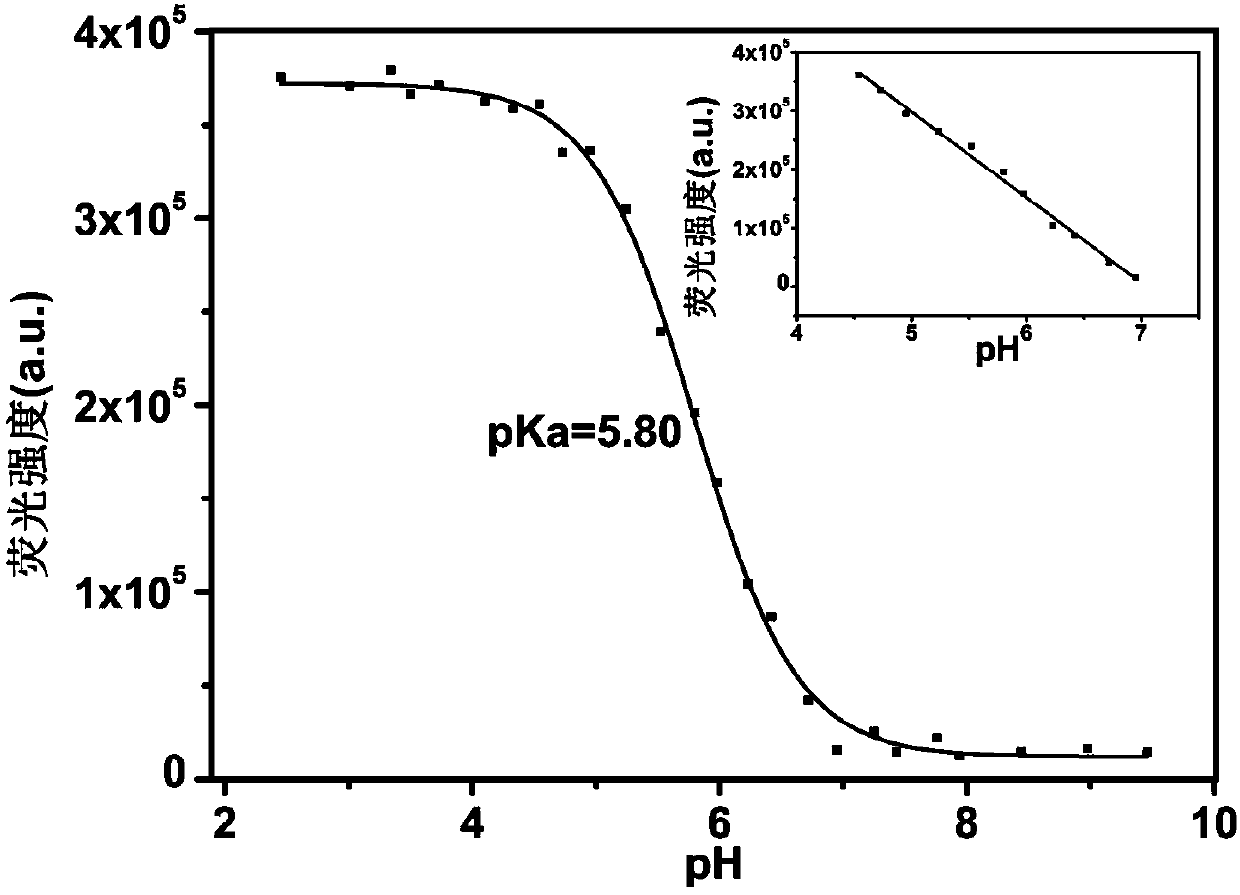Red fluorescent carbon quantum dots used for detecting pH in cells and preparation method thereof
A carbon quantum dot and red fluorescence technology, applied in the field of red fluorescent carbon quantum dots and their preparation, can solve the problems of limitation, limited application, inability of nuclear membrane to enter the nucleus, etc., and achieve high quantum yield, good biocompatibility, Responsive effect
- Summary
- Abstract
- Description
- Claims
- Application Information
AI Technical Summary
Problems solved by technology
Method used
Image
Examples
Embodiment 1
[0020] A preparation of red fluorescent carbon quantum dots for detecting intracellular pH in this embodiment comprises the following steps:
[0021] (1) Weigh 0.2 mmol of p-phenylenediamine and dissolve it in 0.15 mol of ethylenediamine to obtain a light yellow liquid;
[0022] (2) Place the above solution in a microwave oven, react at 20% power for 20 minutes, cool to room temperature after the reaction stops, add 5mol / L HCl until gas escapes;
[0023] (3) Put the above obtained solution into a dialysis bag of 500-1000Da, then put the dialysis bag into a 1000ml beaker, and dialyze for two days to obtain a pure aqueous solution of carbon quantum dots, which is freeze-dried to obtain light pink flocs carbon quantum dots. The quantum yield of the carbon quantum dots was measured to be 14%.
[0024] Dissolve the obtained carbon quantum dots in PBS buffer solutions with pH=5.8 and pH=7.4 respectively, make 50μg / ml solutions, add them to the culture medium of A549 cells, incubat...
Embodiment 2
[0030] (1) Weigh 0.1 mmol of p-phenylenediamine and dissolve it in 0.15 mol of ethylenediamine to obtain a light yellow liquid;
[0031] (2) Place the above solution in a microwave oven, react at 40% power for 20 minutes, cool to room temperature after the reaction stops, add 5mol / L HCl until gas escapes;
[0032] (3) Put the above obtained solution into a dialysis bag of 500-1000Da, then put the dialysis bag into a 1000ml beaker, and dialyze for two days to obtain a pure aqueous solution of carbon quantum dots, which is freeze-dried to obtain light pink flocs carbon quantum dots. The quantum yield of the carbon quantum dots was measured to be 12%.
Embodiment 3
[0034] (1) Weigh 0.2 mmol of p-phenylenediamine and dissolve it in 0.075 mol of ethylenediamine to obtain a light yellow liquid;
[0035] (2) Place the above solution in a microwave oven, react at 60% power for 15 minutes, cool to room temperature after the reaction stops, add 5mol / L HCl until gas escapes;
[0036] (3) Put the above obtained solution into a dialysis bag of 500-1000Da, then put the dialysis bag into a 1000ml beaker, and dialyze for two days to obtain a pure aqueous solution of carbon quantum dots, which is freeze-dried to obtain light pink flocs carbon quantum dots. The quantum yield of the carbon quantum dots was measured to be 10%.
PUM
| Property | Measurement | Unit |
|---|---|---|
| particle diameter | aaaaa | aaaaa |
Abstract
Description
Claims
Application Information
 Login to View More
Login to View More - R&D
- Intellectual Property
- Life Sciences
- Materials
- Tech Scout
- Unparalleled Data Quality
- Higher Quality Content
- 60% Fewer Hallucinations
Browse by: Latest US Patents, China's latest patents, Technical Efficacy Thesaurus, Application Domain, Technology Topic, Popular Technical Reports.
© 2025 PatSnap. All rights reserved.Legal|Privacy policy|Modern Slavery Act Transparency Statement|Sitemap|About US| Contact US: help@patsnap.com



